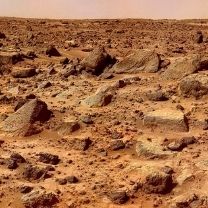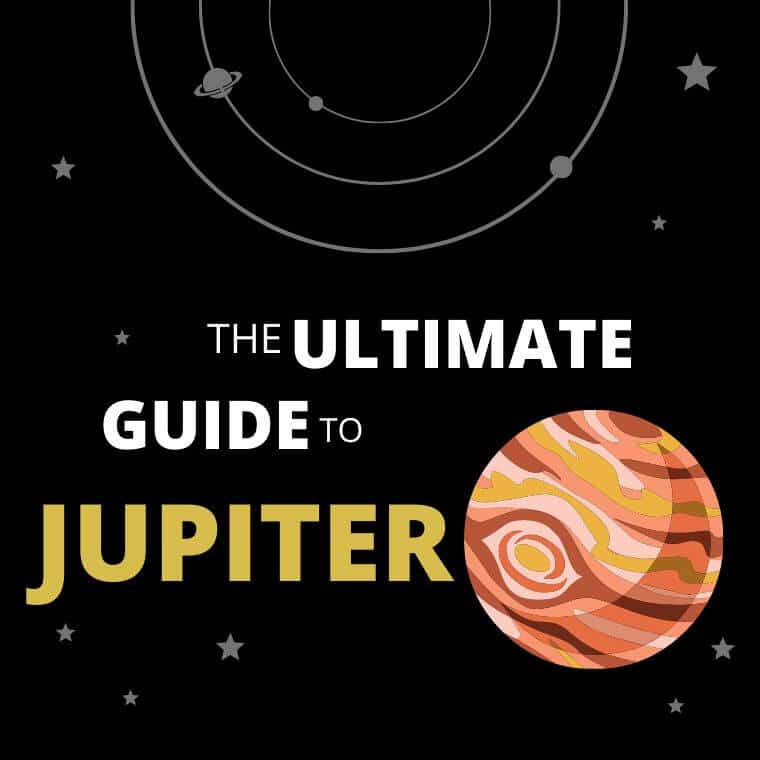Looking to discover new things about our solar system, you have come to the right place with our planet facts section. Discover all there is to know about the eight planets in our solar system and wander off to discover more about each one.
The Planets
There are 8 Planets in the solar system: Earth, Jupiter, Mars, Mercury, Neptune, Saturn, Uranus, and Venus.
The planets in our solar system are divided into two groups Terrestrial Planets and Gas Giants.
Terrestrial Planets are Earth, Mars, Mercury, and Mars, and then you have Gas Giants that are Jupiter, Neptune, Saturn, and Uranus.
Find out more interesting facts about the planets in our solar system below:
Planet Facts
- Mercury is a hot planet however not too hot for ice
- Mercury and Venus are the only planets that do not have moons
- Mars atmosphere was once thicker, believed to be made thinner by the Sun
- Due to the size, Jupiter catches lots of comets
- It is a mystery to science how old Saturns rings are
- Uranus is a stormy planet but maybe even more turbulent than once thought
- The wind blows above 1,100 MPH on Neptune, making them supersonic winds
- Mars have the biggest volcano called Olympus Mons
- Valles Marineris is the longest valley on Mars, 10x the size of the Grand Canyon
- Comets and asteroids are leftovers from what our Solar system once looked like
- The eight planets in our solar system all orbit in the same direction
- Every planet had been visited by spacecraft
- Planet Mercury is shrinking
Size and Order of the Planets

The image illustrates all the planets within our solar system from the closest to the Sun outwards. Mercury, Venus, Earth, Mars, Jupiter, Saturn, Uranus, and lastly Neptune.
As you can see from the image that Jupiter is the giant planet in our solar system, followed by Saturn, Uranus, Neptune, Earth, Venus, Mars, and finally Mercury which is the smallest planet in your solar system.
Below we display the size of are planets and how they are from the sun. Also, how long they take to complete a full orbit in earth days.
| Planet | Diameter | Distance from the Sun | Distance Traveled in One Orbit of The Sun | Single Orbit (Year Length) |
|---|---|---|---|---|
| Sun | 864,938 miles | 0 miles | ||
| Mercury | 3,030 miles | 36,800,000 miles | 223,700,000 miles | 3 Earth months. |
| Venus | 7,520.8 miles | 67,200,000 miles | 422,500,000 miles | 7 Earth months. |
| Earth | 7,917.5 miles | 93,000,000 miles | 584,000,000 miles | 1 Earth year. |
| Mars | 4,212.3 miles | 141,600,000 miles | 888,000,000 miles | 23 Earth months. |
| Jupiter | 86,881 miles | 483,600,000 miles | 3,037,000,000 miles | 142 Earth months. Almost 12 Earth years. |
| Saturn | 72,367 miles | 886,500,000 miles | 5,565,900,000 miles | 354 Earth months. (29.5 Earth years) |
| Uranus | 31,518 miles | 1,783,700,000 miles | 11,201,300,000 miles | 1009 Earth months. (84 Earth years) |
| Neptune | 30,599 miles | 2,795,200,000 miles | 17,562,300,000 miles | 1979 Earth months (almost 165 Earth years) |
Just to be clear the distance from the Sun will always be an average because the orbit of the planets in our solar system does not make a perfect circle.
Types of Planets
Our eight planets fall within two categories based on their characteristics, with four of our planets falling into the Terrestrial Planets bracket and the remaining four planets classed as Gas Giants.

Terrestrial Planets (Inner planets)
There are four planets that fall into the terrestrial categorize. The terrestrial planet is the four planets closest to the Sun, and the reason they are known as the inner planets.
The planets are Mercury, Venus, Earth, and Mars being the last terrestrial planet. Terrestrial planets are dense and rocky in characteristics.

Gas Giants (Outer planets)
Eight total planets within our solar system leave us with four gas giants that are also known as the outer planets.
The planets are Jupiter, Saturn, Uranus, and Neptune. The gas giants are found in our solar systems outer with them all gaseous composition hence the name gas giants.
What Is A Planet?
Such a simple question in terms of definition but highly controversial. Before 1978, a planet’s definition was simply a body that orbited the Sun that reflected sunlight and was not a planetary moon, comet, or asteroid.
As with all things science, it is ever-evolving, and in 1978 Pluto was discovered to have a moon that allowed science to more accurately measure its mass. Leading to years of debating if Pluto was, in fact, a planet. Until the 1990s and early 2000s, several objects in the outer solar system were the same size as Pluto.
Pluto was then downgraded as a Dwaft Planet, and the definition of a planet was finally agreed upon by the International Astronomical Union (IAU).
A planet is a celestial body that:
- is in orbit around the Sun,
- has sufficient mass for its self-gravity to overcome rigid body forces so that it assumes a hydrostatic equilibrium (nearly round) shape, and
- has cleared the neighborhood around its orbit.
How Many Planets Are In The Solar System?
The International Astronomical Union (IAU), the governing body in naming astronomical objects using the definition above, says there are8 known planets within our solar system.
Mercury, Venus, Earth, Mars, Jupiter, Saturn, Uranus, and Neptune.
Pluto was once a planet until August 2006, when the IAU downgraded it to a Dwarf Planet.
Distances Between Planets
The distances between planets will vary depending on where each planet is in its orbit around the Sun and how fast it’s moving. Sometimes they’ll be close, sometimes farther away. It all depends on their position at any given time.
The beautiful thing about these planets is that none of them are perfect circles. As a result, the distance between Earth and Mercury can range from 77 million km at its closest point to as far away as 222 million kilometers when it’s on the farthest side of its orbit path. There’s so much difference in distances depending on where each planet is positioned along their orbits!
The table below shows the eight planets and their average distance between them. In order to measure this, we used astronomical units (AU).
1 AU is the distance from Earth to the Sun, which equates to 149.6 million kilometers.
Planet Distance Table
| FROM | TO | AU | KM | MILES |
|---|---|---|---|---|
| Mercury | Venus | 0.34 | 50,290,000 | 31,248,757 |
| Mercury | Earth | 0.61 | 91,691,000 | 56,974,146 |
| Mercury | Mars | 1.14 | 170,030,000 | 105,651,744 |
| Mercury | Jupiter | 4.82 | 720,420,000 | 447,648,234 |
| Mercury | Saturn | 9.14 | 1,366,690,000 | 849,221,795 |
| Mercury | Uranus | 18.82 | 2,815,640,000 | 1,749,638,696 |
| Mercury | Neptune | 29.70 | 4,443,090,000 | 2,760,936,126 |
| Venus | Earth | 0.28 | 41,400,000 | 25,724,767 |
| Venus | Mars | 0.8 | 119,740,000 | 74,402,987 |
| Venus | Jupiter | 4.48 | 670,130,000 | 416,399,477 |
| Venus | Saturn | 8.80 | 1,316,400,000 | 817,973,037 |
| Venus | Uranus | 18.49 | 2,765,350,000 | 1,718,388,490 |
| Venus | Neptune | 29.37 | 4,392,800,000 | 2,729,685,920 |
| Earth | Mars | 0.52 | 78,340,000 | 48,678,219 |
| Earth | Jupiter | 4.2 | 628,730,000 | 390,674,710 |
| Earth | Saturn | 8.52 | 1,275,000,000 | 792,248,270 |
| Earth | Uranus | 18.21 | 2,723,950,000 | 1,692,662,530 |
| Earth | Neptune | 29.09 | 4,351,400,000 | 2,703,959,960 |
| Mars | Jupiter | 3.68 | 550,390,000 | 342,012,346 |
| Mars | Saturn | 7.99 | 1,196,660,000 | 743,604,524 |
| Mars | Uranus | 17.69 | 2,645,610,000 | 1,643,982,054 |
| Mars | Neptune | 28.56 | 4,273,060,000 | 2,655,279,484 |
| Jupiter | Saturn | 4.32 | 646,270,000 | 401,592,178 |
| Jupiter | Uranus | 14.01 | 2,095,220,000 | 1,301,969,708 |
| Jupiter | Neptune | 24.89 | 3,722,670,000 | 2,313,267,138 |
| Saturn | Uranus | 9.7 | 1,448,950,000 | 900,377,530 |
| Saturn | Neptune | 20.57 | 3,076,400,000 | 1,911,674,960 |
| Uranus | Neptune | 10.88 | 1,627,450,000 | 1,011,297,430 |








